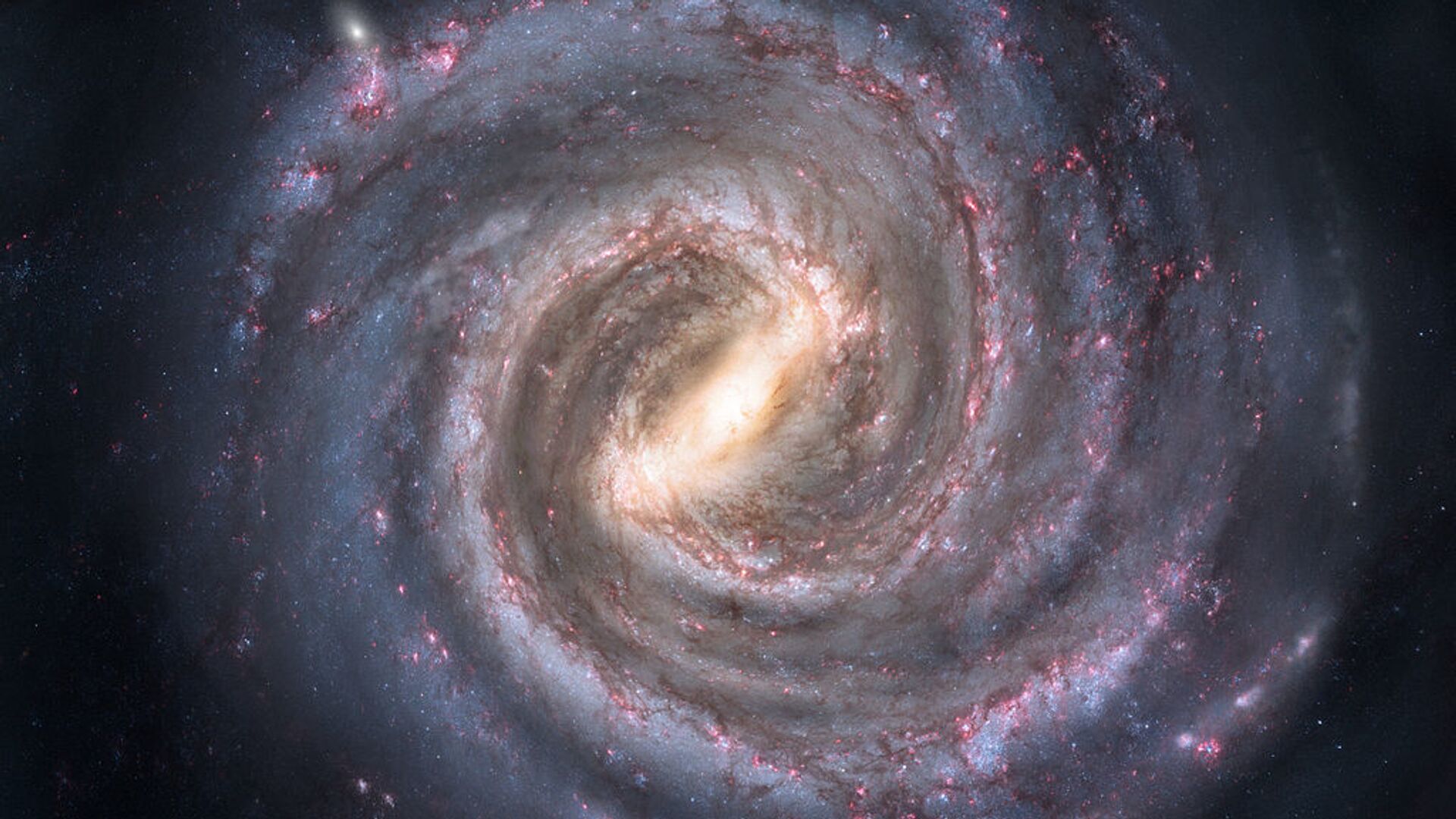https://sputnikglobe.com/20230119/astronomers-detect-9-billion-year-old-signal-from-galaxy-far-far-away-1106480427.html
Astronomers Detect 9 Billion Year-Old Signal From Galaxy Far, Far Away
Astronomers Detect 9 Billion Year-Old Signal From Galaxy Far, Far Away
Sputnik International
Astronomers from McGill University and Indian Institute of Science detected a radio signal emanating from a distant galaxy when the universe was only 4.9 bln years old.
2023-01-19T10:26+0000
2023-01-19T10:26+0000
2023-01-19T12:41+0000
science & tech
mcgill university
india
radio signals
outer space
galaxy
https://cdn1.img.sputnikglobe.com/img/107853/46/1078534683_0:225:1024:801_1920x0_80_0_0_68973250c618179c79d8725c9cd96dde.jpg
A team of astronomers from India and Canada has detected a radio signal from a very distant galaxy, which had been had been travelling to Earth for almost 9 billion years. The signal came from atomic hydrogen, the substance that is the main element in star formation in the galaxy.Atomic hydrogen emits radio waves, which can be detected by low-frequency radio telescopes. However, this signal is extremely weak, so it is very rare to be able to track the emission from a distant part of space. The signal detected by scientists this time came from the galaxy SDSSJ0826+5630, when the Universe was only 4.9 billion years old.Scientists made the discovery using data from the Giant Metrewave Radio Telescope (GMRT). The data itself was obtained because of gravitational lensing, when the presence of another massive body bends the light emitted by other sources. Such a process effectively results in the “magnification” of the signal. In the case studied, the original light wave of the signal was 21 centimetres long and increased to 48 centimetres, which helped with picking it up."But thanks to the help of a naturally occurring phenomenon called gravitational lensing, we can capture a faint signal from a record-breaking distance. This will help us understand the composition of galaxies at much greater distances from Earth," Professor Dobbs said.
Sputnik International
feedback@sputniknews.com
+74956456601
MIA „Rossiya Segodnya“
2023
News
en_EN
Sputnik International
feedback@sputniknews.com
+74956456601
MIA „Rossiya Segodnya“
Sputnik International
feedback@sputniknews.com
+74956456601
MIA „Rossiya Segodnya“
sdssj0826+5630 galaxy signal, giant metrewave radio telescope detected 9 bln years old radio signal, signals from the outer space, longest signals in the world, how scientists detect radio signals from space
sdssj0826+5630 galaxy signal, giant metrewave radio telescope detected 9 bln years old radio signal, signals from the outer space, longest signals in the world, how scientists detect radio signals from space
Astronomers Detect 9 Billion Year-Old Signal From Galaxy Far, Far Away
10:26 GMT 19.01.2023 (Updated: 12:41 GMT 19.01.2023) Time travel may not be possible for now, but the wonders of science and technology allow us to see things in the past - sometimes, on a cosmic scale. For instance, the Giant Metrewave Radio Telescope has recently picked up a signal that has traveled more than half the age of the universe.
A team of astronomers from India and Canada
has detected a radio signal from a very distant galaxy, which had been had been travelling to Earth for almost 9 billion years.
The signal came from atomic hydrogen, the substance that is the main element in star formation in the galaxy.
Atomic hydrogen emits radio waves, which can be detected by low-frequency radio telescopes. However, this signal is extremely weak, so it is very rare to be able to track the emission from a distant part of space. The signal detected by scientists this time came from the galaxy SDSSJ0826+5630, when the Universe was only 4.9 billion years old.
"It’s the equivalent to a look-back in time of 8.8 billion years," noted Arnab Chakraborty, a Post-Doctoral Researcher at McGill University under the supervision of Professor Matt Dobbs.
Scientists made the discovery using data from the
Giant Metrewave Radio Telescope (GMRT). The data itself was obtained because of gravitational lensing, when the presence of another massive body bends the light emitted by other sources. Such a process effectively results in the “
magnification” of the signal. In the case studied, the original light wave of the signal was 21 centimetres long and increased to 48 centimetres, which helped with picking it up.
"But thanks to the help of a naturally occurring phenomenon called gravitational lensing, we can capture a faint signal from a record-breaking distance. This will help us understand the composition of galaxies at much greater distances from Earth," Professor Dobbs said.

